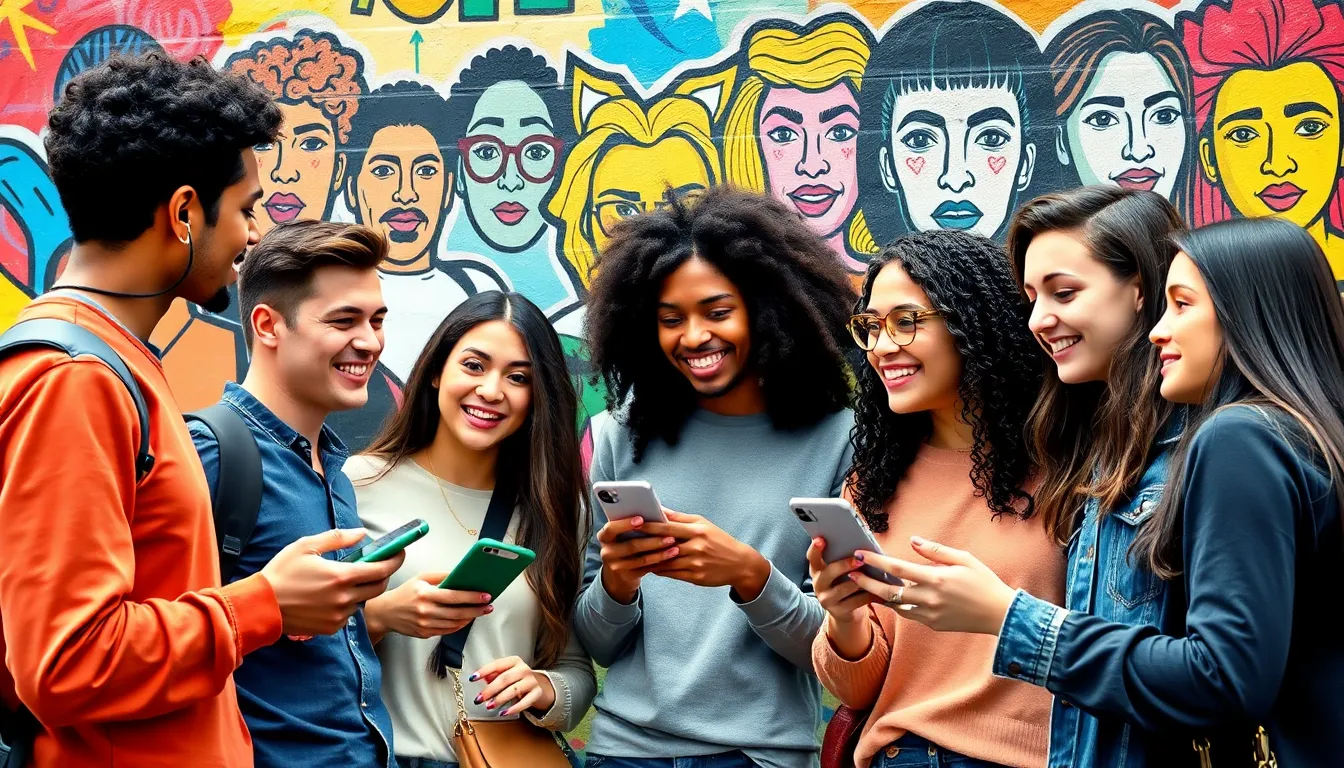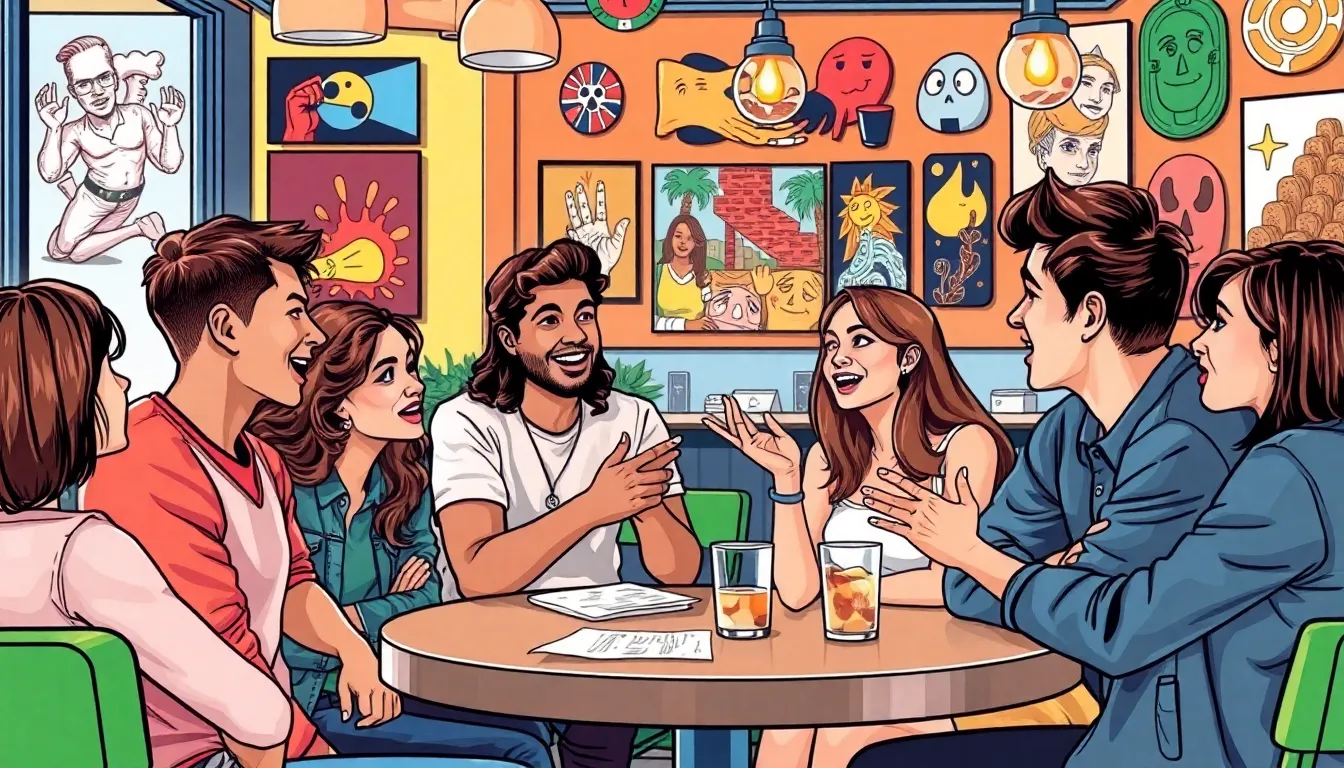In a world where TikTok dances and meme culture reign supreme, the notion of a “pop culture crisis” might sound like an overdramatic headline from a tabloid magazine. But hold on—it’s not just sensationalism. From the rise of cancel culture to the dizzying speed of trends that come and go faster than a cat video on the internet, something’s definitely off in the realm of entertainment.
Pop Culture Crisis
A pop culture crisis represents a genuine concern in the entertainment industry, characterized by the destabilizing effects of trends, movements, and social commentary. This phenomenon manifests through notable shifts in how audiences engage with media and cultural artifacts.
Definition and Overview
A pop culture crisis refers to situations where prevailing cultural norms are challenged, leading to widespread discussions and actions around specific issues. Cancel culture plays a significant role, affecting celebrities, artists, and media organizations. Censorship concerns arise as public backlash escalates against perceived missteps. Rapidly changing trends further complicate this landscape, creating a sense of instability among creators and consumers alike. It reflects a moment where cultural relevance is questioned amid evolving societal values.
Historical Context
Historical events have shaped the framework of pop culture crises. The emergence of the internet catalyzed this evolution, enabling instant communication and amplifying collective responses to controversial topics. The 2000s introduced social media platforms, allowing for quick sharing and mobilization of public opinion. Significant events, such as the Me Too movement, spotlighted long-standing issues within entertainment. Each era grapples with unique crises, revealing how cultural appetites evolve over time. These shifts illustrate a cycle of reaction and adaptation, continuously influencing the landscape of pop culture.
Causes of Pop Culture Crisis

A variety of factors contribute to the ongoing pop culture crisis. Critical issues include social media influence and changing audience dynamics.
Social Media Influence
Social media plays a vital role in shaping public sentiment around pop culture. Platforms like Twitter and Instagram allow users to voice opinions instantly, amplifying both support and backlash against celebrities and trends. Users often engage in cancel culture, leading to swift repercussions for perceived missteps. This rapid response environment creates anxiety within the industry as artists and organizations navigate public perception. Those in the entertainment sector must remain vigilant about their actions, knowing that online platforms can turn minor controversies into significant crises. Reactionary behavior across social media influences what becomes socially acceptable, showcasing the power of digital communities in the pop culture landscape.
Changing Audience Dynamics
Demographics and preferences of the audience constantly evolve, creating challenges for content creators. Younger audiences often demand authenticity and transparency from public figures. This change in expectations forces industries to adapt or face severe backlash. Diverse voices and perspectives become increasingly prioritized, challenging traditional norms. Platforms that fail to address these shifts may risk losing relevance. As global connectivity rises, audiences share experiences and values more broadly, further complicating the relationship between creators and consumers. Understanding these dynamics proves essential for anyone aiming to succeed in today’s entertainment environment.
Impacts of Pop Culture Crisis
Pop culture crises yield significant shifts within entertainment and societal views. These effects can be observed in both the entertainment industry and public perception.
On Entertainment Industry
Pop culture crises disrupt traditional business models within the entertainment sector. Cancellations of projects occur more frequently due to public backlash, forcing studios to reconsider their strategies. Celebrities feel pressured to align with diverse viewpoints to avoid criticism. Adaptability becomes crucial, as artists and creators must respond to changing audience expectations rapidly. Streaming services witness increased scrutiny regarding their content choices in light of evolving standards. Emerging trends may receive swift rejection from audiences, leading to financial implications for creators. Industry stakeholders observe that relevance hinges on the ability to navigate these challenges effectively.
On Public Perception
Public perception is profoundly influenced by pop culture crises. Social media amplifies voices that demand accountability, creating a more engaged and informed audience. Audiences prioritize authenticity over polished personas, reshaping how celebrities present themselves. Conversations around cancel culture prompt discussions on moral responsibility. Shifts in societal values frequently dictate which topics generate the most scrutiny. Individuals now question the intentions behind artistic expressions more critically. With diverse perspectives emerging, the public’s relationship with pop culture becomes complex, where support and backlash can be interlinked. Such dynamics force creators to continuously gauge the cultural climate to maintain relevance.
Navigating Through Pop Culture Crisis
Navigating a pop culture crisis requires adaptability and keen insight. Understanding dynamics ensures creators respond effectively to an ever-changing landscape.
Strategies for Creators
Creators must prioritize authenticity in their work. Embracing genuine narratives resonates more deeply with audiences. Engaging proactively with feedback fosters community support. Collaborating with diverse voices enhances representation and relevance. Adapting quickly to trends keeps content fresh and appealing. Establishing clear communication enriches creator-audience relationships, resulting in mutual trust. Consequently, successful navigators of pop culture crises demonstrate resilience and responsiveness.
Role of Audiences
Audiences significantly influence the landscape of pop culture. They demand authenticity and transparency from creators, holding them accountable for their actions. Engaging with platforms amplifies collective voices, shaping public sentiment and driving meaningful conversations. Supporting diverse content encourages inclusivity and wider perspectives within media. When audiences voice their preferences, they impact trends, contributing to an ongoing dialogue about cultural values. Ultimately, these factors position audiences as active participants in the evolution of pop culture rather than passive consumers.
Conclusion
The pop culture crisis represents a pivotal moment in the entertainment industry where change is not just inevitable but essential. As audiences demand more authenticity and accountability from creators, the landscape continues to evolve rapidly. This shift challenges traditional norms and compels artists to engage with their audiences in meaningful ways.
Navigating this complex environment requires a proactive approach that embraces diverse perspectives and fosters open communication. By understanding the dynamics at play, creators can not only survive but thrive in a world where public sentiment shapes cultural narratives. The ongoing dialogue around these issues is crucial for the future of pop culture, ensuring it remains vibrant and relevant in an ever-changing society.

